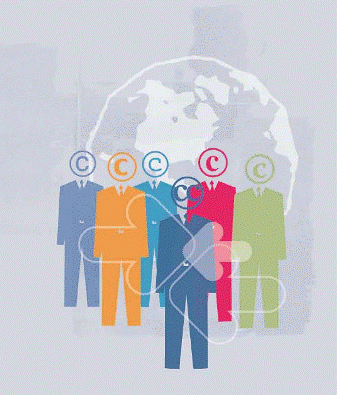A Documentary is a work, such as a film or television program, presenting political, social, or historical subject matter in a factual and informative manner. Documentary texts are supposedly those which aim to document reality, attempting veracity in their description of people, places and events.
Difference between corporation and company:
A Corporation is a legal entity that is separate and distinct from its owners. Corporations enjoy most of the rights and responsibilities that an individual possesses that is, a corporation has the right to enter into contracts, loan and borrow money, sue and be sued, hire employees, own assets and pay taxes.
The most important aspect of a corporation is limited liability. That is, shareholders have the right to participate in the profits, through dividends.
The most important aspect of a corporation is limited liability. That is, shareholders have the right to participate in the profits, through dividends.
A Company on the other hand could be a partnership, proprietorship or other form of enterprise that engages in business with a sole proprietor (just some person that opened a business). A company could also be a corporation. For example Walmart is an incorporated company. Joe's Taco Shack is just a company that isn't incorporated.
In the documentary “The Corporation” there are some terms that we need to have clear:
· Capitalism: Is an economic system characterized by: private property, indiviuduals and companies are allowed to compete for their own economic gain; and free market forces determine the prices of goods and services. Capitalists believe that markets are efficient and they should function without interference, and the role of the state is to regulate and protect.
· Psychopath: A person with an antisocial personality disorder, manifested in aggressive, perverted, criminal, or amoral behavior without empathy or remorse. This personality disorder is characterized by an abnormal lack of empathy combined with strongly amoral conduct but masked by an ability to appear outwardly normal. Psychopaths have deficits or deviance in several areas:interpersonal relationships, emotion, and self-control.
· Legal Institution: Set of premises in a permanent structure or structures designed to house usually large groups of individuals who are subject to a common authority or regime. Systems of legal rules which allow to change the regulative and constitutive rules of an organization.
· Externalities: The quality or state of being outside or directed toward or relating to the outside or exterior that has an effect on an individual or entity due to the actions of another individual or entity.
· Limited Liability:Legal protection available to the shareholders (stockholders) of privately and publicly owned corporations in which a partner or investor cannot lose more than the amount invested. The investor is not personally responsible for the debts and obligations of the company in the event that these are not fulfilled. The firm itself, as a legal entity, is liable for the rest.
As a legal organizational model, how does the rise of corporations influence the aspects of culture in pursuing profit?
Corporations influence culture in many ways, they can act as a person does because they are legal persons and they have the same rights and duties that human persons have. People tend to look at corporations as persons without conscience and soul because they only want to obtain profit, many often we classify brands and corporations and we give them personality characteristics, in that way we are creating an image of a person that sometimes is seen as a psychopath because it has all the characteristics of that type of person such as exploitation to workers, incapacity to keep lasting relationships, indifference to other`s security, and harm to animals; but in the other hand, corporations are seen as positive organizations because of their social responsibility, although many people disagree in this point. Most of the people look at them as externalization machines because corporations don’t really care about well-being of societies and they compete for power without being aware of the damage they are doing to societies and the environment in their search for the highest profit.
· www.nscb.gov.ph/glossary/housing.asp
Image: http://conciencianoosfera.wordpress.com/d-o-c-u-m-e-n-t-a-l-e-s/
Image: http://conciencianoosfera.wordpress.com/d-o-c-u-m-e-n-t-a-l-e-s/




